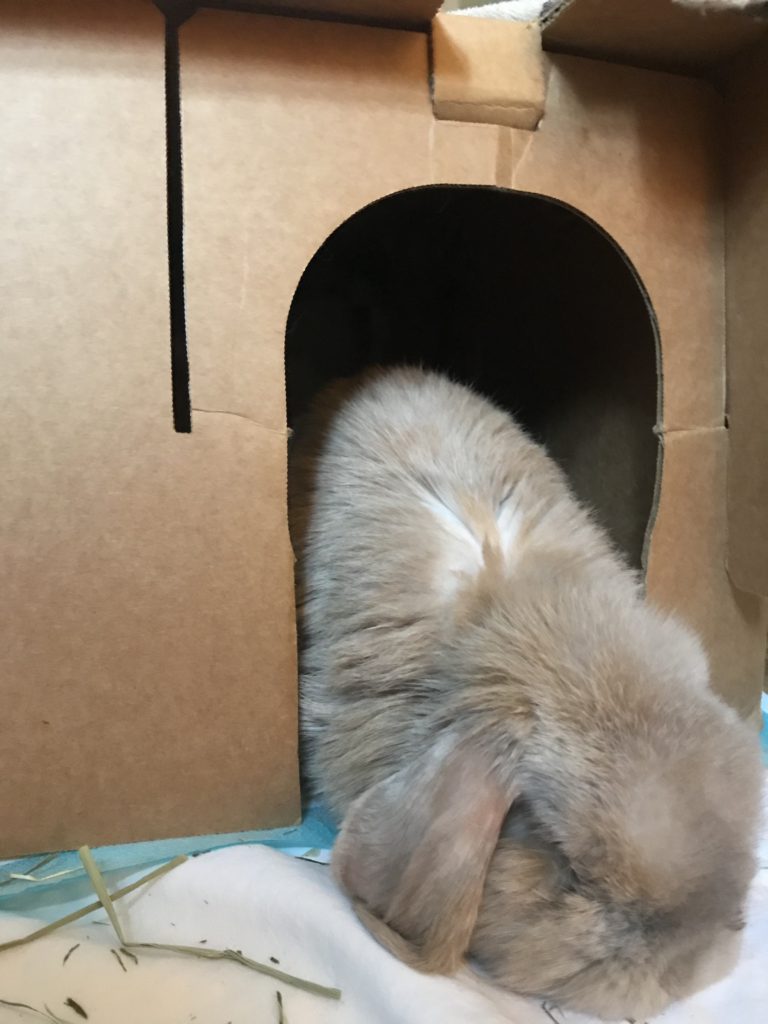Syringe feeding and why you need to learn
February 12, 202020+ years of keeping bunnies has not proved either inexpensive or without worry. If you’re a bunny owner you’ll know this already. If you’re new to bunny ownership, it’s important to recognise situations when our lovely bunsters need help.
I drafted this a while ago but Esther’s recent reluctance to eat after her spay seemed like a perfect time to put this out there. GI stasis, where the gut movement slows down is common after operations. It’s also common especially around this time of year but can occur at any time. Causes include lack of eating hay, ingesting fur, illness, stress or simply ageing… The important thing is to take action when you suspect it. To not do so can be fatal at worst and cause unnecessary suffering at least. I would, of course, always advise getting a bunny with suspected stasis to a good bunny vet. But experience, and with a deep understanding of each individual rabbit I’ve been lucky to have shared my life with, I’ve being able to tell for the most part just by looking at them, that they are on good form, or teetering on the edge of something, and have been able to syringe feed fibre support, eg Critical Care, to get things – or keep things – moving. (Along with making the bunny move every so often to exercise their organs too).
But it’s not just stasis that often means syringe feeding. Simply getting meds into the bun where prescribed, including pain killers, antibiotics, gut stimulants are all part and parcel of keeping your bunny in good health and/or essential to recover from illness. It also prevents multiple (sometimes daily) trips to the vet if you can administer at home. Most vets will be happy to show you how to. But mainly if you have to hold them, it’s about finding that gap mid way down their cheek behind the incisors, where the syringe fits nicely even if they’re clamped shut, and aiming it to the opposite cheek, not down their throat which can be dangerous if it goes down the wrong hole.
Amazingly, Esther is the first bunny I’ve had that will take meds straight from the syringe without me having to hold her (some put a bit of banana around the end to encourage them to do this). I’ve had other buns that needed wrapping in a towel, burrito style, and holding firmly to take them on board and avoiding losing fingers – but to be honest I’ve made sure all the bunnies I’ve had have been used to being handled and have all been syringe fed at some point in their lives.

DaisyDoe was really happy to be held and had so many meds in the last couple of years of her life that she almost waited for it. I totally believe that the fact that I could bolster her food intake with Critical Care every day or so as she got older, extended her life and made her feel better. The fibre boost meant her gut worked and, although the rest of her body began failing her, she was pain free and happy (on Metacam and Tramadol) to the end. One amazing girl who I miss terribly.
Esther is going to prove difficult when it comes to syringe feeding Critical Care going forward. Although she initially took it, she now detests the stuff. I’ll cross that bridge but for now I’m happy that she’s back eating after collecting stronger gut meds from the vet over the weekend (arranged via an email and phone call) and administered for the last couple of days. Much better than stressing her further taking her back there.
We’re back on track. The fact that she doesn’t pee or poo a single raisin from early morning til 7pm every night is another conundrum I’m now trying to fathom. Bunnies eh?
As I finished this post, I opened this quarter’s Rabbiting On magazine (RWAF). They have a full article on this very subject and there’s great advice on burritoing your bun and how to syringe feed so please check it out. Great minds!
Submit your review | |
